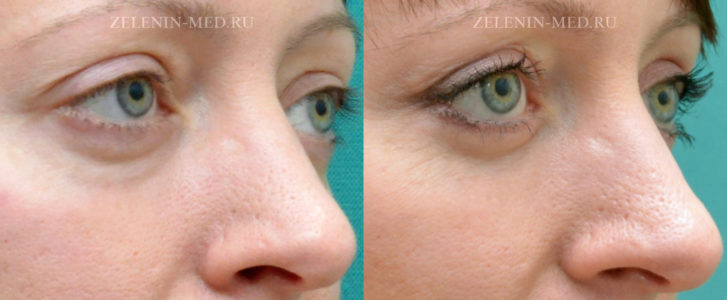Blepharoplasty
Blepharoplasty (eyelid surgery) is a surgery reducing age-related changes of eyelids and the surrounding area as well as their congenital anomalies and fat hernias. In addition, eye shape is corrected. The surgery gives a long-lasting effect, rejuvenates, makes your look more relaxed and open.
TYPES OF BLEPHAROPLASTY
• Lower: the surgery on the lower eyelid
• Upper: on the upper eyelid
• Circular: on the upper and lower eyelid at the same time.
INDICATIONS FOR BLEPHAROPLASTY
• Loose, puffy, and "heavy" skin, hooded eyes.
• Lowering eye corners and eyebrow tails.
• Wrinkly skin on the lower eyelid, under-eye bags, increased size of the lacrimal and infraorbital grooves.
• Age-related defects of the upper and lower eyelids.
• Congenital anomalies of eyelid structure or trauma-related consequences distorting eye symmetry, causing vision problems, and creating a visible appearance flaws.
• Modeling upper blepharoplasty for patients of the Mongoloid race.
SURGERY PLANNING
◾ Personal manager. When a patient comes to the clinic, they get a personal plastic surgery manager. The manager supervises the patient from the moment of consultation with the doctor up until the operation: supports the patient during pretreatment for the operation, prepares all the necessary documents, solves issues about the preoperational period.
◾ All in one place. All laboratory and clinical investigations as well as necessary consultations of specialist doctors take one or two days in the LANTSET clinic for the patient to complete.
◾ On the appointed operation day, the patient comes to the inpatient unit of the clinic and is accommodated in a comfortable VIP ward. After the operation, the patient stays in the inpatient unit of the clinic for one or two days monitored by medical professionals. Upon discharge, the patient receives a discharge report with the dates and times of examinations, bandaging, and suture removal.
◾ The duration of the surgery depends on its type but rarely exceeds 60-90 minutes. The most common type of anesthesia for blepharoplasty is intravenous.
You will receive all the detailed information about the operation during an individual consultation with a plastic surgeon.

REHABILITATION
• It takes three to five weeks to recover from the surgery. For one or two weeks, there is swelling of the periorbital area and hematomas. To reduce the symptoms, you should apply a cold compress to your eyelids during the first day. In the first week after surgery, you can have such symptoms as increased tear secretion, dry conjunctiva, or excess sensitivity to light. To minimize discomfort, you should use eye drops.
• If your eyes are sensitive to light, stay in a dark room. Do not turn on bright lights or go outside in sunny weather. Do not load your eyes: avoid reading, watching TV after the surgery, or using a computer. To prevent infectious complications, your doctor will prescribe antibacterial eye drops.
• For some time after blepharoplasty, do not use contact lenses. Women should avoid applying makeup on the face, especially on the skin around the eyes, for five to seven days. No alcohol or smoking. No working out, sauna, steam room or tanning. You should limit routine physical activity.
CONTRAINDICATIONS
Some eye diseases are contraindications to blepharoplasty:
• Pathological conjunctiva dryness (dry eye syndrome)
• Ocular hypertension (glaucoma)
• Retinal detachment
• Inflammatory diseases of the lacrimal glands
• Infectious processes in the periorbital tissues
• Conjunctivitis
• Inflammation of upper or lower eyelid skin (rash, itching, etc.)
To get a consultation with a plastic surgeon, call 8 800 500 02 03 or contact us via the feedback form.
Examples of works Зеленина Вадима Николаевича and Зеленина Николая Вадимовича






















